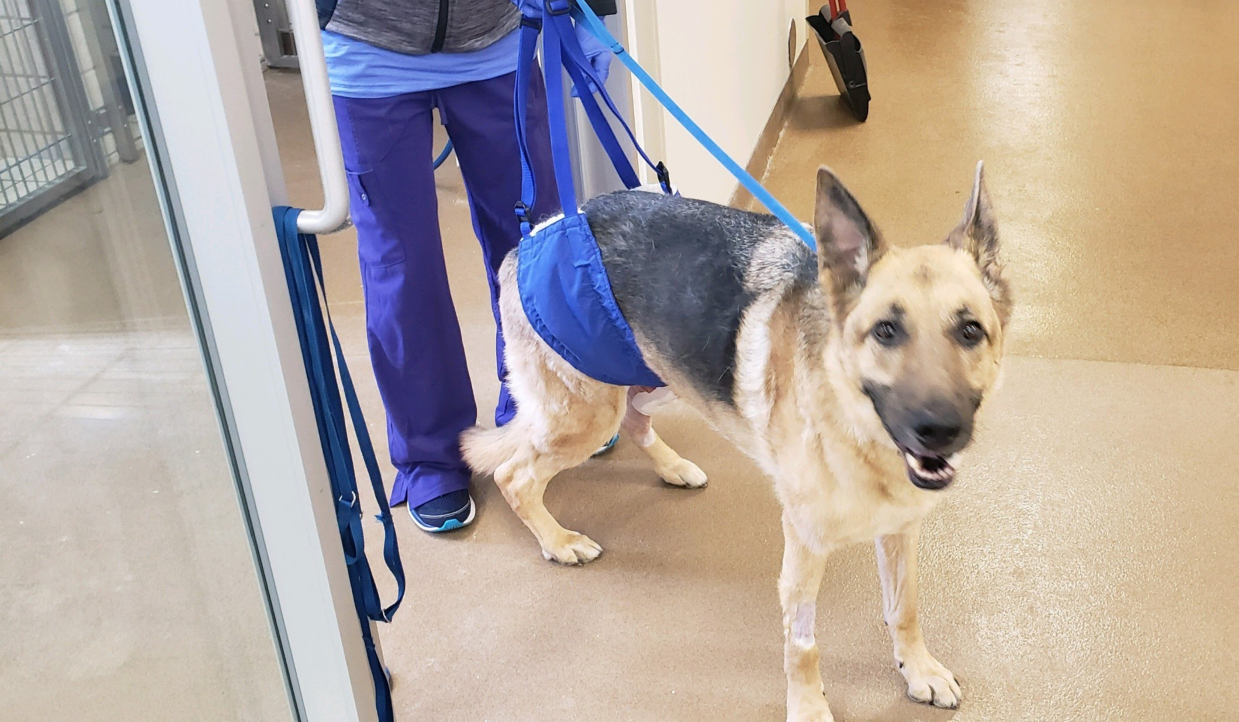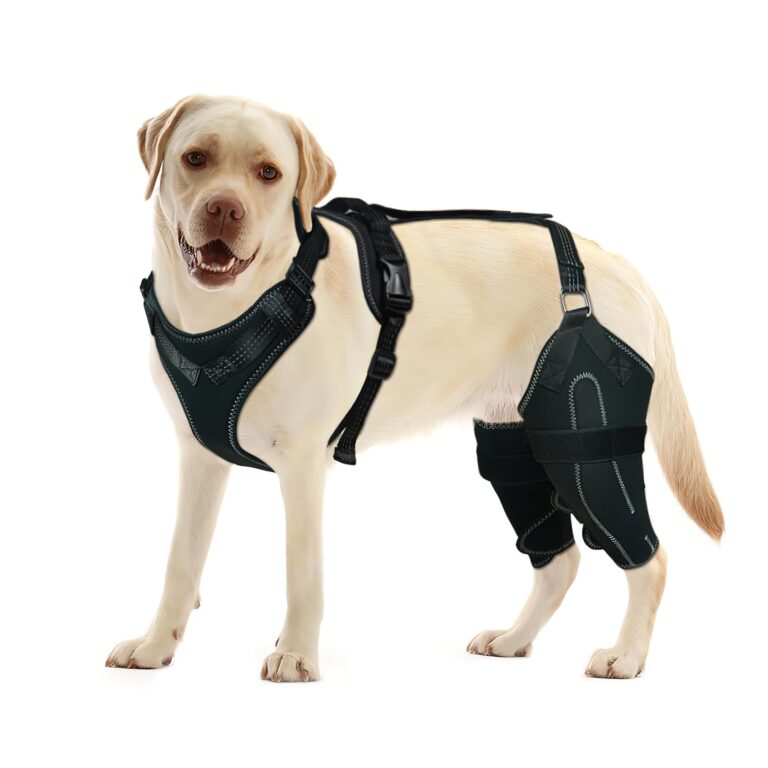A torn ACL can be a painful condition for a dog, and the decision to put them down should be made in consultation with a veterinarian once all treatment options have been exhausted. Many factors such as the dog’s age, overall health, and quality of life will determine the best course of action.
When a dog suffers from a torn ACL, it can be a distressing and challenging situation for both the pet and the owner. The decision of when to put a dog down with a torn ACL is a difficult one, and it is essential to carefully consider the dog’s overall well-being and prognosis.
While some cases may be treatable through surgery and rehabilitation, in severe cases where the dog’s quality of life is severely impacted, euthanasia may be the most compassionate choice. It is crucial to seek professional guidance from a veterinarian to assess the best course of action for the beloved pet.
Common Causes Of Acl Injuries
The common causes of ACL injuries in dogs are accidents and physical activities, breed predisposition, genetics, and obesity contributing to joint stress. Accidents and physical activities such as running, jumping, and sudden stops can lead to ACL injuries in dogs. Certain breeds are predisposed to ACL injuries due to their anatomical structure, and genetics may also play a role in increasing the susceptibility to this type of injury. Additionally, obesity can contribute to joint stress and increase the likelihood of ACL injuries in dogs. Identifying these causes is essential for understanding when to consider the possibility of putting a dog down with a torn ACL.
Symptoms Of A Torn Acl In Dogs
Dogs with a torn ACL often show signs of limping and difficulty in walking. You may also notice swelling around the knee. Another indication can be an audible popping sound during the injury. It’s important to monitor these symptoms and consult a veterinarian if you observe any of these signs in your dog.
Assessing Quality Of Life
When considering the decision to put a dog down with a torn ACL, it’s essential to evaluate the pain levels and chronic discomfort that the dog is experiencing. It’s important to assess whether the dog’s discomfort can be managed effectively through medication and other interventions.
One key factor to consider is the dog’s mobility. If the torn ACL is causing severe immobility and a loss of interest in activities that once brought joy, it may indicate a significant decline in the dog’s quality of life.
If the dog has undergone treatment and surgery for the torn ACL but has not shown improvement, it may be time to reassess the situation. In such cases, the ineffectiveness of these measures may lead to prolonged suffering for the dog, prompting the difficult decision about their well-being.
Emotional Considerations For Owners
The bond between pet and owner is an essential factor to consider when faced with the decision of putting a dog down due to a torn ACL. The emotional toll of caring for a disabled pet can be overwhelming, leading to significant distress for the owner. It is crucial to acknowledge the resources available for coping with decision-making, such as seeking support from veterinarians, pet therapy, and online communities. Understanding the emotional impact and accessing appropriate resources is vital for assessing the best course of action for both the pet and the owner.
Surgical Solutions For Torn Acl
TPLO (Tibial Plateau Leveling Osteotomy): A surgical procedure utilized to treat torn ACL in dogs. It aims to alter the dynamics of the knee, minimizing the need for the ACL. This procedure is generally recommended for large dogs and active breeds, allowing a faster and smoother recovery process.
TTA (Tibial Tuberosity Advancement): Another surgical technique adopted to address torn ACL in dogs. It involves altering the anatomy of the dog’s knee to reduce stress on the damaged ACL. This method is known for promoting a rapid recovery and offering enhanced joint stability.
Extracapsular Repair and Recovery Expectations: An alternative surgical intervention for torn ACL in dogs. It involves the use of a strong suture material to stabilize the knee joint, facilitating natural healing. The recovery expectations include strict post-operative management and physical therapy to ensure the best possible outcomes.
Non-surgical Alternatives
Physical therapy and rehabilitation: This alternative focuses on building muscle strength and flexibility to support the torn ACL. It includes a range of exercises and techniques to improve the dog’s mobility and stability.
Knee braces and support: Supporting the injured knee with braces and specialized support can help reduce the strain on the ACL, providing stability and limiting further damage.
Pain management through medications and supplements: Utilizing prescribed medications and nutritional supplements can help manage the pain and inflammation associated with the torn ACL, improving the dog’s comfort and mobility.
Understanding Prognosis And Recurrence
Statistics on successful recovery post-surgery: The success rate for dogs recovering from torn ACL surgery is approximately 85-90%. With proper post-operative care and rehabilitation, most dogs can regain full or near-full function of the affected leg.
Risks of re-injury and complications: Dogs who have undergone ACL surgery are at a higher risk of re-injury in the same or opposite leg. Careful management of exercise, weight, and continued monitoring for any signs of discomfort are essential to mitigate these risks.
Long-term management of joint health: After ACL surgery, long-term joint health management is crucial. This includes maintaining a healthy weight, providing appropriate exercise, and potentially incorporating joint supplements or therapies to support overall joint function and minimize the risk of arthritis development.

Credit: www.ovrs.com
Frequently Asked Questions Of When To Put A Dog Down With Torn Acl
What Are The Symptoms Of A Torn Acl In Dogs?
Symptoms of a torn ACL in dogs include limping, reduced activity, swelling, and difficulty bearing weight on the affected leg. If you notice any of these signs, consult a vet for proper diagnosis and treatment.
What Are The Treatment Options For A Dog With A Torn Acl?
Treatment options for a dog with a torn ACL include rest, physical therapy, pain management, and surgery in severe cases. A thorough evaluation by a veterinarian will determine the best course of action for your dog’s specific condition.
Can A Torn Acl In A Dog Heal Without Surgery?
While some minor ACL tears may heal with rest and rehabilitation, most cases require surgery to fully repair the ligament and restore proper function in the dog’s leg. Consult with a veterinarian to explore the best treatment plan for your dog.
Conclusion
Deciding when to put a dog down with a torn ACL is a difficult choice. It requires careful consideration of the animal’s quality of life and level of pain. Consulting with a veterinarian and exploring all treatment options are essential.
Ultimately, the well-being of the dog should be the top priority in making this tough decision.



